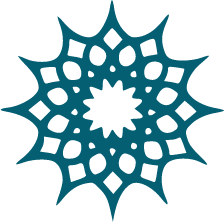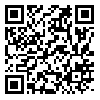المجلد ۶، العدد ۴ - ( ۱۴۴۶ )
المجلد ۶ العدد ۴ صفحات ۵-۳۹ |
الرجوع إلی قائمة المجلدات
Download citation:
BibTeX | RIS | EndNote | Medlars | ProCite | Reference Manager | RefWorks
Send citation to:



BibTeX | RIS | EndNote | Medlars | ProCite | Reference Manager | RefWorks
Send citation to:
Takhti F, Echresh K, Dadkhah Tehrani H. Decentralization in children’s stories: The case study of Amal Nasser’s “Archifia” . san 2025; 6 (4) :5-39
URL: http://san.khu.ac.ir/article-1-396-ar.html
URL: http://san.khu.ac.ir/article-1-396-ar.html
تختي فاطمة، عچرش خیریة، دادخواه تهراني حسن. اللّامرکزيّة في قصص الأطفال(قصة «أرشیفیا» لأمل ناصر أنموذجاً). دراسات في السردانية العربية. ۱۴۴۶; ۶ (۴) :۵-۳۹
فاطمة تختي*۱ 
 ، خیریة عچرش۲
، خیریة عچرش۲ 
 ، حسن دادخواه تهراني۲
، حسن دادخواه تهراني۲ 


 ، خیریة عچرش۲
، خیریة عچرش۲ 
 ، حسن دادخواه تهراني۲
، حسن دادخواه تهراني۲ 

۱- جامعة شهید تشمران اهواز ، f.takhti@yahoo.com
۲- جامعة شهید تشمران اهواز
۲- جامعة شهید تشمران اهواز
الملخّص: (۴۴۲ المشاهدة)
قصة «أرشيفيا» لأمل ناصر، الكاتبة والقاصة اللبنانية الشابة المعاصرة هي قصة مشوّقة زاخرة بأحداث تمزج ما بین الفانتازیا والواقع، وتساهم في تعوید الطفل علی تحلیل العمیق للمواقف والأحداث وابتعاده عن السطحیة والتدرب على التفكير المنطقي لتحقيق النتيجة المرجوة. تعد اللّامركزيّة إحدى التقنیات الأكثر استخداماً من قِبَلِ كُتّاب أدب الأطفال لإقامة علاقة إبداعية مع جمهورهم. يهدف هذا البحث النوعي إلى كشف البنى العميقة للّامركزيّة في قصة «أرشيفيا» لأمل ناصر وكيفية استخدام هذه التقنيات كعناصر سردية ضرورية وإبداعية في هذه القصة ونقاط القوة في استخدام تقنيات اللّامركزيّة التي تساعد على تطور العلاقة بين المتلقِّي الطفل والكاتبة باستخدام أسلوب تحليل المحتوى، لقد وظّفنا في بحثنا هذا المنهج التفسيري - التجریدي للإجابة عن الأسئلة. تُظهر نتائج هذا البحث أنّ تأثير استراتيجيات اللّامركزيّة على الجمهور يختلف أحياناً ويتوسع أحياناً. تعمل بعض هذه التقنیات على تشتيت تركيز الجمهور من خلال نوع من الحركة في عملية السرد. وأخرى تخلق توقعات للقارئ أثناء قراءة القصة، وينتظر القارئ حتى تتحقق توقعاته، وهذه التقنیات تفاجئ الجمهور بحضورها. كما أظهر هذا البحث أنّ أمل ناصر تستخدم تقنيات اللّامركزيّة ذات الصلة وتقدم المسار السردي للقصة بطريقة مغامرة ومتداخلة ومثيرة، وتربط التقنيات المختلفة تباعاً في نقطة واحدة ولذلك فإنّ التركيز الذهني للجمهور يتأرجح دائماً بين المركزيّة واللّامركزيّة. وتوصّل هذا البحث إلى أنّ الكاتبة تخلق حالة من الغموض المعقد من خلال استخدام أساليب مختلفة مثل التحوّل وتدخلات الراوي وتكرار الأسئلة. هذا الغموض لم يؤدِ إلى حيرة المتلقي بل يثير فضوله ويشجعه على التفاعل مع النص ومن خلال كسر توقعات المتلقِّي من السرد الخطي التقلیدي والمرکّز يُحوّله من مجرد قارئ إلى مشارك نشط. كما أنّ توظيفها لتغيير وجهة نظر الراوي وإبراز أحداث متزامنة خلف الکوالیس تتيح إظهار الواقع من زوايا مختلفة ويثري تجربة القراءة ويعزز دلالات النص ويعطي المزید من الوضوح والقیمة لمعاني النص.
قائمة المصادر
۱. اکرمی، جمال الدین (۱۳۹۹). کودک و تصویر۲؛ جستارهایی در تصویرگری کتابهای کودکان و نوجوانان، چ۴، تهران: سروش.
۲. بریغش، محمد حسن (۱۹۹۸). أدب الأطفال أهدافه وسماته، ط۳، بیروت-لبنان: مؤسسة الرسالة ناشرون.
۳. بیات کشکولی، مژگان (۱۳۹۶). بررسی شگردهای تمرکززدایی در داستانهای کودکانه یعقوب شارونی، پایاننامه کارشناسی ارشد، دانشگاه زابل.
۴. پولادی، کمال (۱۳۸۷). بنیادهای ادبیات کودک، چ۲، تهران: کانون پرورش فکری کودکان و نوجوانان.
۵. تعاونی، شیرین (۱۳۵۵). تکنیک برشت، تهران: مؤسّسة انتشارات امیرکبیر.
۶. تعلب، سلامة عبد المؤمن (۲۰۱۷). أدب الأطفال وتنمیة الإبداع، مجلة أدب الأطفال؛ دراسات وبحوث، العدد ۱۴، صص ۶۴-۸۰. [DOI:۱۰,۲۱۶۰۸/acss.۲۰۱۷.۹۹۰۴۱]
۷. الجعفر، علي عاشور (۲۰۲۱). عدالة الصّورة في قصص الأطفال من ذوي الاحتیاجات الخاصّة، ط۱، الکویت: الجمعیة الکویتیة لتقدم الطفولة العربیة.
۸. جینزبرگ، هربرت، اوپر، سیلویا (۱۳۷۱). رشد عقلانی کودک از دیدگاه پیاژه، ترجمهی فریدون حقیقی و فریده شریفی، تهران: فاطمی.
۹. چمبرز، ایدان (۱۳۸۷). خوانندهی درون کتاب، ترجمهی طاهره آدینهپور، در دیگرخوانیهای ناگزیر؛ رویکردهای نقد و نظریهی ادبیّات کودک، مرتضی خسرونژاد، چ۱، تهران: کانون پرورش فکری کودکان و نوجوانان، صص۱۱۳-۱۵۲.
۱۰. حسینی طالمی، زهرا، زینی وند، تورج (۱۴۰۰). «آموزش اندیشه برای کودکان در ادبیات داستانی معاصر مصر (مطالعه موردی: «تاجربغداد» اثر کامل کیلانی: براساس نظریة لبپمن)»، زبان و ادبیات عربی، س۱۳، د۱۳، ش۲، صص ۱۰۴-۱۲۱.
۱۱. الحوامدة، محمد فؤاد (۲۰۱۴). أدب الأطفال؛ فنّ و طفولة، ط۱، عمان: دار الفکر ناشرون وموزعون.
۱۲. خسرونژاد، مرتضی (۱۳۸۹). معصومیّت و تجربه؛ درآمدی بر فلسفه ادبیّات کودک، چ۳، تهران: مرکز.
۱۳. خسرونژاد، مرتضی (۱۳۹۰). چگونه توانایی اندیشیدن فلسفی کودکان را پرورش دهیم؛ ضمیمة کتابداستانهای فکری، مشهد: بهنشر.
۱۴. خسرونژاد، مرتضی، هجری، محسن (۱۳۸۴). تمرکززدایی در ادبیّات کودک هم هدف است و هم روش، کتاب ماه کودک و نوجوان، ش۹۰، صص۷۳-۸۳.
۱۵. خلیل، إلهام عبد الرحمن (۱۹۹۷). «النمو المعرفي لبیاجیه من منظور منحی معالجة المعلومات»، مجلة بحوث کلیة الآداب، العدد۲۸، صص ۲۱۳-۲۳۱. [DOI:۱۰,۲۱۶۰۸/sjam.۱۹۹۷.۱۰۳۱۶۹]
۱۶. ذبیح نیا عمران، آسیه، یگانه مهر، حسین (۱۳۹۳). بازآفرینی و بازنویسی در ادبیات کودک و نوجوان، چ۱، تهران: فدک ایساتیس.
۱۷. رشیدة، مرسلي، عائشة، أغا (۲۰۲۳). «توظيف أدب الطفل في الكتاب المدرسي الجزائري قصة "لمن تهتف الحناجر" لعز الدين جلاوجي أنموذجا»، مجلة أدب الطفل المركز الجامعي بريكة، العدد۵، صص ۴۶-۵۴.
۱۸. رینولدز، کیمبرلي (۲۰۱۴). أدب الأطفال، ترجمة یاسر حسن، مراجعة هبة نجیب مغربي، ط۱، نصر-القاهرة: مؤسسة هنداوي للتعلیم والثقافة.
۱۹. زنجابر، امیرحسین، عباسی، علی (۱۳۹۹). سبکشناسی «دگردیسی جسمانه» در داستانهای کودک بر پایهی نظام گفتمان تنشی، جستارهای زبانی، د۱۱، ش۴، صص۴۷-۷۴.
۲۰. زیتوني، لطیف (۲۰۰۲). معجم مصطلحات نقد الرّوایة، ط۱، بیروت-لبنان: مکتبة لبنان ناشرون/ دار النهار للنشر.
۲۱. السويدي، وضحی علي، عطية، محسن محمد (۱۹۹۴). «الدلالات الفنية والتعبيرية لمضمون قصة أصحاب الفيل في رسوم عينة من أطفال الصفين الأول والثالث الابتدائيين بالمدارس القطرية»، حولية کلية التربية، العدد ۱۱، صص ۲۱۴-۲۸۳.
۲۲. الشاهد، نبيل حمدي (۲۰۱۸). الحکايات العجائبية في السرد العربي القديم، القاهرة: الهيئة المصرية العامة للکتاب.
۲۳. شرشاب، علي حلیبد، عموری، نعیم (۲۰۲۱). «المكان في رواية صبارو لشاكر الميّاح»، مجلة لارك للفلسفة واللسانيات والعلوم الاجتماعية، العدد ۴۱، صص ۵۰-۷۵. [DOI:۱۰,۳۱۱۸۵/lark.Vol۲.Iss۴۱.۱۸۰۴]
۲۴. الشهري، سعد بن ظفر بن غرم (۱۴۲۵). تحدید مراحل النمو المعرفي وفقًا لنظریة بیاجیه لطلاب المرحلة الثانویة في مدینة جدة وعلاقتها بالتحصیل الدراسي في العلوم الطبیعیة، رسالة ماجستیر قسم المناهج وطرق التدریس، المملکة العربیة السعودیة: جامعة أم القری.
۲۵. صالح، هیا (۲۰۱۸). أتعلّم من طفلي..أکتب له! (کتابة القصة للفئة العمریة من ۸-۱۱ سنة) في تقنيات الكتابة القصصية للطفل، أماني سلیمان، مؤسسة عبد الحميد شومان، صص ۲۵-۴۵.
۲۶. الضبع، محمود (۲۰۰۸). «السردي في الشعر / الشعري في السرد»، في أسئلة السرد الجدید، الهیئة العامة لقصور الثقافة، القاهرة: شرکة الأمل للطباعة والنشر، صص ۳۲۷-۳۸۱.
۲۷. عبد الفتاح، إسماعیل (۲۰۰۰). أدب الأطفال في العالم المعاصر (رؤیة نقدیة تحلیلیة)، ط۱، نصر-القاهرة: مکتبة الدار العربیة للکتاب.
۲۸. عبد الهادي، نبیل (۲۰۰۶). النمو المعرفي عند الأطفال، ط۲، عمان: دار وائل للنشر.
۲۹. العسیري، محمد (۱۹۹۴). العلاقة بین مرحلة التفکیر ومستوی التحصیل في بعض المواد الدراسیة لدی طلاب الصف الأول ثانوي حسب مراحل التطور الذهني عند بیاجیه، رسالة ماجستیر، المملکة العربیة السعودیة: جامعة الملك سعود.
۳۰. عصفور، سوسن (۲۰۱۳). فنّ الرسم عند الأطفال؛ جمالیّاته ومراحل تطوّره، ط۱، قطر: وزارة الثقافة والفنون والتراث.
۳۱. فتحي، إبراهيم (۱۹۸۸). معجم المصطلحات الأدبية، تونس: المؤسسة العربية للناشرين المتحدین.
۳۲. فيروزمند، عطيه (۱۳۹۱). بررسي تطبيقي رابطة بينامتنيت، تمرکززدايي و توانمندسازي در آثار تصويريداستاني احمدرضا احمدي محمدرضا شمس، آنتوني براون و موريس سنداک، پاياننامه کارشناسي ارشد، شيراز: دانشگاه شيراز.
۳۳. قاسمی، سمانه (۱۳۹۲). شگردهای تمرکززدایی در کتابهای تصویری، پایاننامه کارشناسی ارشد، شیراز: دانشگاه شیراز؛ واحد بین الملل.
۳۴. القریطي، عبد المطلب أمین (۱۹۹۵). مدخل إلی سیکولوچیة رسوم الأطفال، ط۱، مصر: دارالمعارف.
۳۵. الکردي، عبد الرحیم (۲۰۰۶). «السرد في الروایة المعاصرة (الرجل الذي فقد ظله نموذجًا)»، ط۱، القاهرة: مکتبة الآداب.
۳۶. مرادپور، ندا (۱۳۹۱). شگردهای تمرکززدایی در قصّههای ایران، پایاننامه کارشناسی ارشد رشته ادبیّات کودک و نوجوان، شیراز: دانشگاه شیراز.
۳۷. معینی، فرزانه (۱۳۹۹). زدودن غبار از نور دیدگان (بررسی شگردهای تمرکززدایی در کلیلهودمنه)، مطالعات ادبیّات کودک، س۱۱، ش۲، صص۱۵۵-۱۸۴.
۳۸. میرقادری، بشری سادات (۱۳۹۳). شگردهای تمرکززدايی در کتابهای داستانی-تصويری منتخب (گروه های سنی الف و ب) بررسی تطبيقی عربی و فارسی، رساله دکتری رشتهی زبان و ادبیّات عربی، اصفهان: دانشگاه اصفهان.
۳۹. ناصر، أمل (۲۰۲۰). أرشیفیا، رسوم: لینا نداف، ط۱، لبنان: حکایة قمر دار نشر وتوزیع/ دار رمانة.
۴۰. نجیب، أحمد (۱۹۹۱). أدب الأطفال: علم وفن، ط۱، القاهرة: دار الفکر العربي.
۴۱. نیکولایوا، ماریا (۱۳۹۸). درآمدی بر رویکردهای زیبایی شناختی به ادبیّات کودک، ترجمهی مهدی حجوانی و فاطمه زمانی، چ۱، تهران: کانون پرورش فکری کودکان و نوجوانان.
۴۲. نیکولایوا، ماریا، اسکات، کارول (۱۴۰۰). بازی متن و تصویر در کتابهای تصویری، ترجمهی فریبا خوشبخت و محبوبه البرزی با همکاری فائزه محمد بیگی، چ۱، تهران: انتشارات مدرسه.
۴۳. واطسون، روبرت، جرین، هنري کلاي لیند (۲۰۰۴). سیکولوچیة الطفل والمراهق، الترجمة: دالیا عزت مؤمن، المراجعة، محمد عزت مؤمن، ط۱، القاهرة: مکتبة مدبولي.
۴۴. الهیتي، هادي نعمان (۱۹۸۸). ثقافة الأطفال، الکویت: عالم المعرفة/ سلسلة کتب ثقافیة شهریة یصدرها المجلس الوطني للثقافة والفنون والآداب.
۴۵. یحیی، رافع (۲۰۰۱). تأثیر ألف لیلة ولیلة علی أدب الأطفال العربي، حیفا: دار الهدی للطباعة والنشر.
46. Di Leo, Joseph H (1983). Interpreting Children's Drawings, New York: Brunner- Routledge.
47. Khazaie, Davood, Khosronejad, Morteza (2007). A genetic, epistemological reading of the Lambs' tales from Shakespeare and Persian folktales, The Charles Lamb Bulletin, 137, 15-23.
48. Vygotsky, Lev (1986). Thought and Language, Boston: MIT Press.
49. Abdul Fattah, Ismail (2000). Children's Literature in the Contemporary World (A Critical and Analytical Perspective), 1st ed, Nasr-Cairo: Dar Al-Arabia Library for Books. [In Arabic]
50. Abdul Hadi, Nabil (2006). Cognitive development in children, 2st ed, Amman: Wael Publishing House. [In Arabic]
51. Akrami, Jamaluddin (2019). The child and The Picture Vol. 2; Essays on illustration of books for children and teenagers, 4st ed, Tehran: Soroush. [In Persian]
52. Asfour, Susan (2013). The Art of Drawing for Children; Its Aesthetics and Stages of Development, 1st ed, Qatar: Ministry of Culture, Arts and Heritage. [In Arabic]
53. Al-Asiri, Muhammad (1994). The relationship between the thinking stage and the level of achievement in some academic subjects for first-year secondary school students according to Piaget's stages of mental development, Master's thesis, Kingdom of Saudi Arabia: King Saud University. [In Arabic]
54. Barghish, Muhammad Hassan (1998). Children's Literature, Its Objectives and Features, 3rd ed., Beirut-Lebanon: Al-Risala Publishers Foundation. [In Arabic]
55. Bayat Kashkouli, Mezhgan (2016). Examining decentralization techniques in Yacoub Sharoni's children's stories, Master's thesis, Zabul University. [In Persian]
56. Chambers, Idan (2007). The reader in the book, translated by Tahira Adinepour, in inevitable readings; Criticism and Theory Approaches to Children's Literature, Morteza Khosronjad, Tehran: Center for Intellectual Development of Children and Adolescents, 1st ed, pp. 113-152. [In Persian]
57. Al-Dabaa, Mahmoud (2008). "Narrative in Poetry / Poetic in Narration," in Questions of New Narration, General Authority for Cultural Palaces, Cairo: Al-Amal Printing and Publishing Company, pp. 327-381. [In Arabic]
58. Di Leo, Joseph H (1983). Interpreting Children's Drawings, New York: Brunner- Routledge. [In English]
59. Fathi, Ibrahim (1988). Dictionary of Literary Terms, Tunis: Arab United Publishers. [In Arabic]
60. Firouzmand, Atiyeh (2011). A comparative study of the relationship between intertextuality, decentralization and empowerment in the fictional works of Ahmadreza Ahmadi, Mohammadreza Shams, Anthony Brown and Maurice Sendak, Master's Thesis, Shiraz: Shiraz University. [In Persian]
61. Ghasemi, Samaneh (2012). Decentralization techniques in picture books, master's thesis, Shiraz: Shiraz University; International unit. [In Persian]
62. Ginsberg, Herbert, Opper, Sylvia (1992). Intellectual development of the child from Piaget's point of view, translated by Fereydoun Haghighi and Farideh Sharifi, Tehran: Fatemi. [In Persian]
63. Al-Hawmadeh, Mohammad Fouad (2014). children's literature; Art and Childhood, 1st ed, Oman: Dar Al-Fikr Publishers and Distributors. [In Arabic]
64. Al-Hiti, Hadi Numan (1988). Children's Culture, Kuwait: World of Knowledge/ A monthly cultural book series issued by the National Council for Culture, Arts and Letters. [In Arabic]
65. Hosseini Talami, Zahra, Zainiwand, Toraj (2021). "Education of thought for children in contemporary Egyptian fiction literature (Case study: "The Merchant of Baghdad" by Kamel Kilani: based on Lebpman's theory)", Arabic Language and Literature, Q13, D13, Issue 2, pp. 104-121. [In Persian]
66. Al-Jaafar, Ali Ashour (2021). Image Justice in Stories for Children with Special Needs, 1st ed., Kuwait: Kuwaiti Society for the Advancement of Arab Childhood. [In Arabic]
67. Khalil, Ilham Abdel Rahman (1997). "Piaget's Cognitive Development from the Perspective of Information Processing Approach", Journal of the Faculty of Arts Research, Issue 28, pp. 213-231. [In Arabic]
68. Khazaie, Davood, Khosronejad, Morteza (2007). A genetic, epistemological reading of the Lambs' tales from Shakespeare and Persian folktales. The Charles Lamb Bulletin, 137, 15-23. [In English]
69. Khosronjad, Morteza (2010). innocence and experience; An introduction to the philosophy of children's literature, 3st ed, Tehran: Markaz. [In Persian]
70. Khosronjad, Morteza (2011). How to develop children's ability to think philosophically; Addendum to intellectual novels, Mashhad: Behnasher. [In Persian]
71. Khosronjad, Morteza, Hijri, Mohsen (2004). Decentralization in children's literature is both a goal and a method, Book of Children and Teenagers Month, Issue 90, pp. 73-83. [In Persian]
72. Al-Kurdi, Abdul Rahim (2006). "Narrative in the Contemporary Novel (The Man Who Lost His Shadow as a Model)", 1st ed., Cairo: Maktabat Al-Adab. [In Arabic]
73. Mirqadri, Bushra Sadat (2013). Decentralization techniques in selected story-picture books (age groups A and B) Comparative study of Arabic and Persian, PhD dissertation in the field of Arabic language and literature, Isfahan: University of Isfahan. [In Persian]
74. Moini, Farzaneh (2019). Removing the dust from the light of visions (examination of decentralization techniques in Kalila and Demeneh), Children's Literature Studies, Q11, Issue 2, pp. 155-184. [In Persian]
75. Muradpur, Neda (2011). The methods of decentralization in Iranian stories, master's thesis in the field of children's and adolescent literature, Shiraz: Shiraz University. [In Persian]
76. Najeeb, Ahmed (1991). Children's Literature: Science and Art, 1st ed, Cairo: Dar Al Fikr Al Arabi. [In Arabic]
77. Nasser, Amal (2020). Archive, Illustrations: Lina Naddaf, 1st ed, Lebanon: Qamar's Tale, Publishing and Distribution House/Rummanah House. [In Arabic]
78. Nikolayeva, Maria (2018). An introduction to aesthetic approaches to children's literature, translated by Mehdi Hajjavani and Fatemeh Zamani, 1st ed, Tehran: Center for Intellectual Development of Children and Adolescents. [In Persian] [DOI:10.4324/9781315785981-1]
79. Nikolaeva, Maria, Scott, Carol (2021). The play of text and image in picture books, translated by Fariba Khoshbakht and Mehbooba Albarzi in collaboration with Faezeh Mohammad Beigi, 1st ed, Tehran: Madraseh Publications. [In Persian]
80. Poladi, Kamal (2008). Foundations of Children's Literature, 2st ed, Tehran: Center for Intellectual Development of Children and Adolescents. [In Persian]
81. Al-Quraiti, Abdul Muttalib Amin (1995). Introduction to the Psychology of Children's Drawings, 1st ed, Egypt: Dar Al-Maaref. [In Arabic]
82. Rachida, Marsili, Aisha, Agha (2023). "The Use of Children's Literature in Algerian School Books: The Story "For Whom the Throats Cry" by Ezzeddine Jellaouji as a Model", Children's Literature Magazine, University Center of Brika, Issue 5, pp. 46-54. [In Arabic]
83. Reynolds, Kimberly (2014). Children's Literature, translated by Yasser Hassan, reviewed by Heba Naguib Maghribi, 1st ed., Nasr-Cairo: Hindawi Foundation for Education and Culture. [In Arabic]
84. Saleh, Haya (2018). I learn from my child.. I write for him! (Story writing for the age group 8-11 years) in Story writing techniques for children, Amani Suleiman, Abdul Hameed Shoman Foundation, pp. 25-45. [In Arabic]
85. Al-Shahed, Nabil Hamdi (2018). Marvelous Tales in Ancient Arabic Narrative, Cairo: Egyptian General Book Authority. [In Arabic]
86. Al-Shahri, Saad bin Dhafar bin Gharam (1425). Determining the stages of cognitive development according to Piaget's theory for secondary school students in Jeddah and its relationship to academic achievement in natural sciences, Master's thesis, Department of Curricula and Teaching Methods, Kingdom of Saudi Arabia: Umm Al-Qura University. [In Arabic]
87. Sharshab, Ali Halibed, Amouri, Naeem (2021). "Place in Shaker Al-Mayah's Novel Sabaro", Lark Journal of Philosophy, Linguistics and Social Sciences, Issue 41, pp. 50-75. [In Arabic]
88. Al-Suwaidi, Wadhi Ali, Atiya, Mohsen Mohammed (1994). "The artistic and expressive implications of the content of the story of the owners of the elephant in the drawings of a sample of children in the first and third grades of primary school in Qatari schools," College of Education Annual, Issue 11, pp. 214-283. [In Arabic]
89. Taalab, Salama Abdel-Momen (2017). Children's Literature and the Development of Creativity, Children's Literature Magazine; Studies and Research, Issue 14, pp. 64-80. [In Arabic]
90. Taavoni, Shirin (1976). Bresht technique, Tehran: Amirkabir publishing house. [In Persian]
91. Vygotsky, Lev (1986). Thought and Language, Boston: MIT Press. [In English]
92. Watson, Robert, Green, Henry Clay Lind (2004). Child and Adolescent Psychology, translated by: Dalia Ezzat Momen, revised by: Mohamed Ezzat Momen, 1st ed, Cairo: Madbouly Library. [In Arabic]
93. Yahya, Rafi (2001). The impact of One Thousand and One Nights on Arabic children's literature, Haifa: Dar Al-Huda for Printing and Publishing. [In Arabic]
94. Zabihnia Imran, Asia, Yeganeh Mehr, Hossein (2013). Re-creation and rewriting in children's and adolescent literature, 1st ed, Tehran: Fadak Isatis. [In Persian]
95. Zanjabar, Amir Hossein, Abbasi, Ali (2019). Stylology of "physical transformation" in children's stories based on tense discourse system, Linguistic Studies, D11, Issue 4, pp. 47-74. [In Persian]
96. Zaytouni, Latif (2002). Dictionary of Novel Criticism Terms, 1st ed., Beirut-Lebanon: Lebanon Publishers Library/Dar Al-Nahar Publishing House. [In Arabic]
إرسال رسالة إلى المؤلف المسؤول
| Rights and permissions | |
 |
This work is licensed under a Creative Commons Attribution-NonCommercial 4.0 International License. |




.png)


